Areas Susceptible for Drought during 2024 Warm Season
03/14/2024, 8:22 am EDT
The March 2024 Global Marine Heat Wave Discussion and Outlook
03/20/2024, 3:58 pm EDTVerification of the Summer 2023-24 Climate across South America
Executive summary:Provided is an explanation of the primary climate drivers of the just-completed meteorological summer climate pattern across South America. Emphasized is the influence of the (record warm) SSTA pattern in the tropics on the intra-tropical convergence zone (ITCZ) and the latent heat release form the attendant convection leading to subtropical high pressure in the subtropical to mid-latitudes across South America. A comparison with the temperature/precipitation observation of summer 2023-24 with the Climate Impact Company summer seasonal forecast is also provided.
South America summer 2023-24 verification: The warmest nearby tropical SSTA pattern on record was observed during meteorological summer 2023-24 to help shape the South America climate. The axis of strongest convection propelling the intra-tropical convergence zone (ITCZ) stretched across the warm El Nino waters in the tropical East Pacific toward Northern Peru and across the historic warm tropical South Atlantic (TSA) index measurement area from the equator to 20S in the South Atlantic (Fig. 1). The latent heat release poleward from the ITCZ convection caused warming of the subtropical to mid-latitude atmosphere either side of South America inspiring strong subtropical high-pressure areas over Northern Chile and off the East Coast of Argentina (Fig. 2). The sensible weather created by the ITCZ, and subtropical high-pressure combination yielded below normal rainfall across Central and South Brazil causing a drought compensated by enough rainfall in Argentina to ease drought while East Brazil was soaking wet (Fig. 3). All of Brazil and Northern Argentina was hotter than normal (Fig. 4).
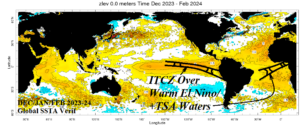
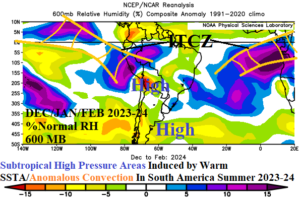
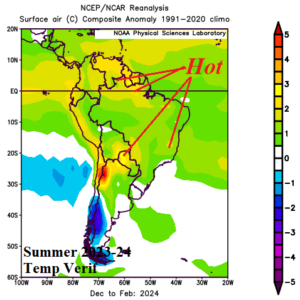
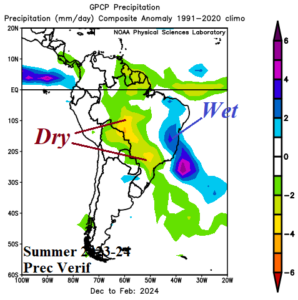
Fig. 1-4: Global SSTA analysis for DEC/JAN/FEB 2023-24, where the ITCZ set-up and the compensating subtropical high-pressure areas, and the sensible temperature/precipitation anomalies for meteorological summer 2023-24.
The Climate Impact Company DEC/JAN/FEB 2023-24 temperature and precipitation forecast for South America projected a much hotter than normal summer for Brazil into Northeast Argentina (Fig. 5) while the rainfall outlook called for North and Central Brazil drought while parts of Interior Southeast Brazil and Argentina were wetter than normal (Fig. 6). The observed thermal climate was a close match to the forecast featuring widespread anomalous heat (Fig. 7). The rainfall verification validates the Central Brazil and coastal Southeast Brazil dryness although the forecast was too wet near Paraguay but correct with wet climate in East Brazil (Fig. 8).
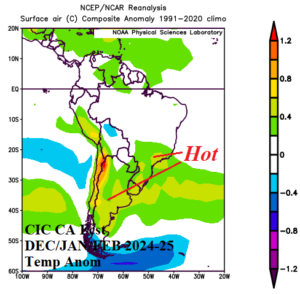
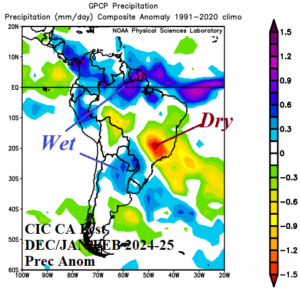


Fig. 5-8: The Climate Impact Company DEC/JAN/FEB 2023-24 temperature/precipitation anomaly forecast compared to verification.

